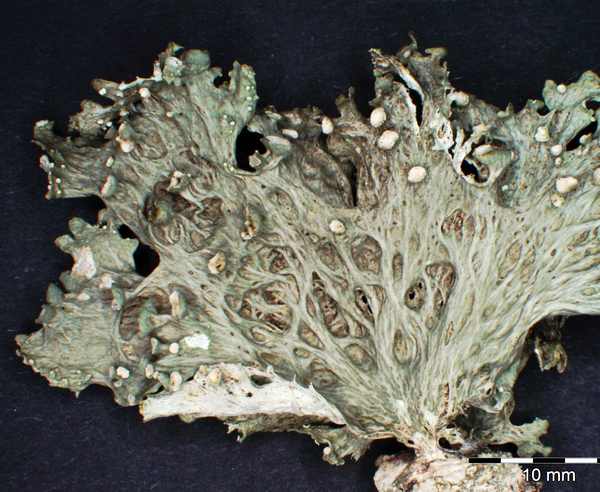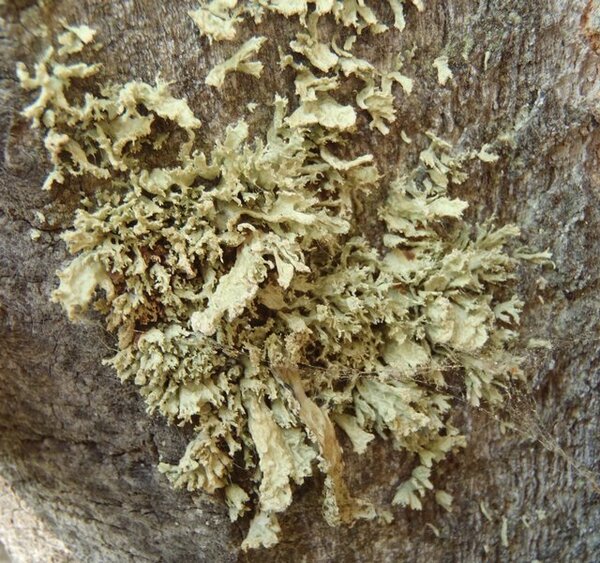Ramalina sinensis Jatta
N. Giorn. Bot. Ital., n. ser., 9: 462, 1902.
Synonyms: Ramalina calicaris f. fibrillosa Th. Fr.; Ramalina calicaris var. nervosa (Nyl.) Räsänen; Ramalina fastigiata var. nervosa Nyl.; Ramalina landroënsis Zopf; Ramalina nervosa (Nyl.) Räsänen
Distribution: N - TAA (Nascimbene & al. 2007b).
Description: Thallus fruticose, straw-coloured to greenish, loosely tufted or with more or less scattered up to 5 cm long (usually less), erect or hanging, flaccid when wet, growing from a basal holdfast. Lobes fan-shaped, to 2(-3) cm wide at apex, simple or palmately divided, flattened, rather thin, slightly dorsiventral, with the lower surface paler than the upper one. Upper surface longitudinally or reticulately wrinkled, with elevated chondroid strands; lower surface with white, decorticate depressions. Apothecia lecanorine, laminal or subterminal, 3-10 mm across, with a flat to convex, greenish disc, and a concolorous, ridged-reticulate thalline margin. Asci 8-spored, clavate to cylindrical-clavate, the apical dome K/I+ dark blue with a pale, conical-pointed apical cushion (axial mass) never penetrating through the entire d-layer, the wall K/I-, but the thin outer gel K/I+ blue, Bacidia-type. Ascospores 1-septate, hyaline, ellipsoid, straight or curved, 12-17 x 6-7 µm. Photobiont chlorococcoid. Spot tests: cortex and medulla K-, C-, KC-, P-. Chemistry: cortex with usnic acid; medulla without lichen substances (traces of atranorin reported from N America).Note: on twigs of trees and shrubs in montane forests, this species is abundant in Picea obovata-stands along rivers in Central Asia (e.g. in the Altay Mnts., Burjatja, the Baikal region, TSB). I have never seen a sample from Italy, but the old record from Trentino might be correct, while that from Campania (see Nimis 1993: 604), being dubious, is not accepted here. The species was included as “Regionally Extinct” in the Italian red list of epiphytic lichens (Nascimbene & al. 2013c).
Growth form: Fruticose
Substrata: bark
Photobiont: green algae other than Trentepohlia
Reproductive strategy: mainly sexual
Subcontinental: restricted to areas with a dry-subcontinental climate (e.g. dry Alpine valleys, parts of Mediterranean Italy)
Commonnes-rarity: (info)
Alpine belt: absent
Subalpine belt: extremely rare
Oromediterranean belt: absent
Montane belt: extremely rare
Submediterranean belt: absent
Padanian area: absent
Humid submediterranean belt: absent
Humid mediterranean belt: absent
Dry mediterranean belt: absent
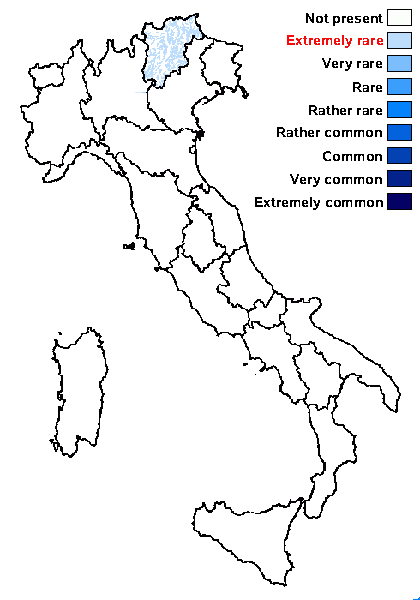
Predictive model
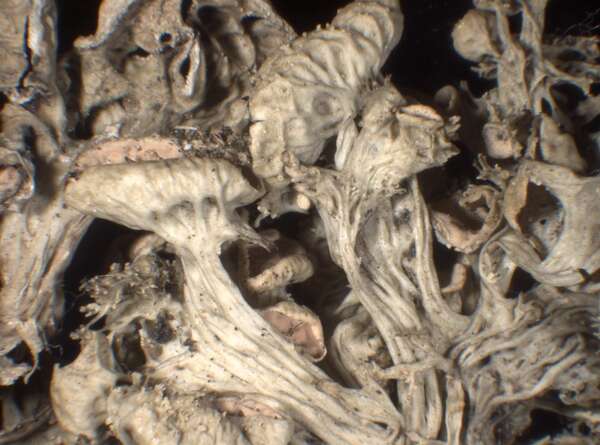

P.L. Nimis; Owner: Department of Life Sciences, University of Trieste
Herbarium: TSB (29011)
2003/03/17
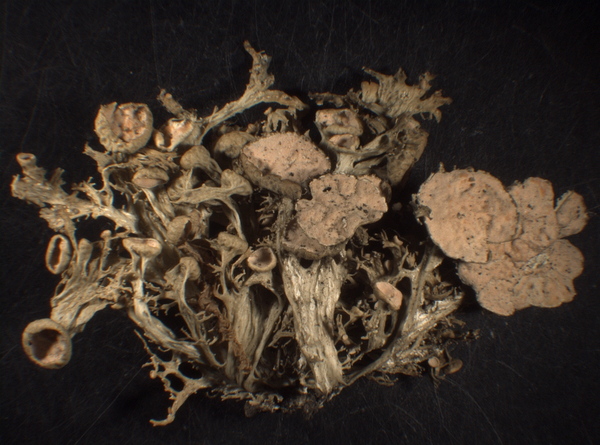

E. Pittao; Owner: Department of Life Sciences, University of Trieste
Herbarium: TSB (29011)
2008.04.02
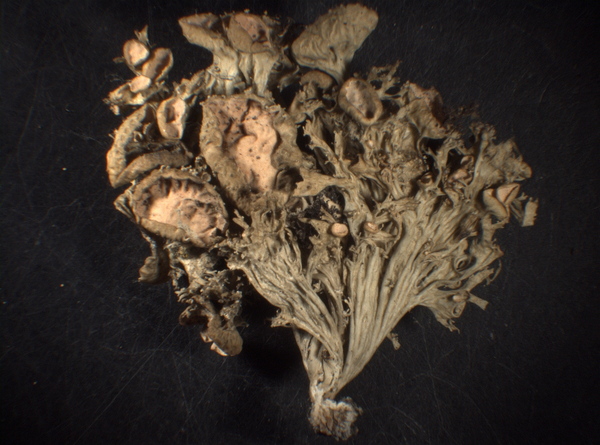

E. Pittao; Owner: Department of Life Sciences, University of Trieste
Herbarium: TSB (29011)
2008.04.02
Growth form: Fruticose
Substrata: bark
Photobiont: green algae other than Trentepohlia
Reproductive strategy: mainly sexual
Subcontinental: restricted to areas with a dry-subcontinental climate (e.g. dry Alpine valleys, parts of Mediterranean Italy)
Commonnes-rarity: (info)
Alpine belt: absent
Subalpine belt: extremely rare
Oromediterranean belt: absent
Montane belt: extremely rare
Submediterranean belt: absent
Padanian area: absent
Humid submediterranean belt: absent
Humid mediterranean belt: absent
Dry mediterranean belt: absent

Predictive model


P.L. Nimis; Owner: Department of Life Sciences, University of Trieste
Herbarium: TSB (29011)
2003/03/17


E. Pittao; Owner: Department of Life Sciences, University of Trieste
Herbarium: TSB (29011)
2008.04.02


 Index Fungorum
Index Fungorum
 GBIF
GBIF
